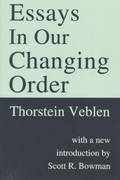Question
A team knows that there are three types of consumers: Casual (c), Typical (t), and Super (s). Consumers within each group are identical, and the
A team knows that there are three types of consumers: Casual (c), Typical (t), and Super (s). Consumers within each group are identical, and the team knows the demand of a representative consumer of each type:
Pc = 40 2Qc
Pt = 50 2Qt
Ps = 70 2Qs
The team cannot distinguish between different types of consumers, and instead engage in menu pricing. The marginal cost of production is constant at MC = 20.
Follow the steps below to determine the packages (quantity and price) sold to each type of fan.
a) The Casual fan package extracts all surplus. How many units will be sold to the Casual fan? What is the price of the Casual fan package?
b) What is a Typical fan surplus from the Casual package in part a)?
c) How many units will be sold to each Typical fan? What is the price of the Typical fan package?
d) What is a Super fan surplus from the Casual package in part a)? What is the Super fan surplus from the Typical package in part c)?
e) How many units will be sold to each Super fan? What is the price of the Super fan package?
f) Check one more "incentive compatibility constraint": Does the Typical fan get more surplus from the Typical package in c) or from the Super package in e)? Does this menu pricing scheme yield the intended result? Briefly explain.
Step by Step Solution
There are 3 Steps involved in it
Step: 1

Get Instant Access to Expert-Tailored Solutions
See step-by-step solutions with expert insights and AI powered tools for academic success
Step: 2

Step: 3

Ace Your Homework with AI
Get the answers you need in no time with our AI-driven, step-by-step assistance
Get Started


